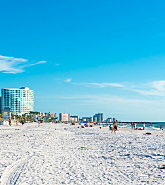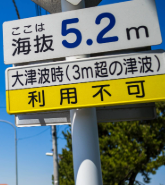If a global prize was to be awarded to the city or country that achieves the peak of disaster resilience, Bermuda might be a fitting first winner.
This October’s Hurricane Nicole made direct landfall on the island. The eyewall tracked over Bermuda with maximum measured windspeeds close to 120 mph. Nonetheless there were there were no casualties. The damage tally was principally to fallen trees, roadway debris, some smashed boats and many downed utility poles. The airport opened in 24 hours, with the island’s ferries operating the following day.
Bermuda’s performance through Nicole was exemplary. What’s behind that?
Since its foundation in 1609 when 150 colonists and crew were shipwrecked on the island, Bermuda has got used to its situation at the heart of hurricane alley. Comprising 21 square miles of reef and lithified dunes, sitting out in the Atlantic 650 miles west of Cape Hatteras, a hurricane hits the island on average once every six or seven years. Mostly these are glancing blows, but once or twice a century Bermuda sustains direct hits at Category 3 or 4 intensity. Hurricane Fabian in 2003 was the worst of the recent storms, causing $300 million of damage (estimated to be worth $650 million, accounting for today’s higher prices and greater property exposure). The cost of the damage from Hurricane Gonzalo in 2014 was about half this amount.
How did Bermuda’s indigenous building style come to adopt such a high standard of wind resistance? It seems to go back to a run of four hurricanes at the beginning of the 18th Century. First, in September 1712 a hurricane persisted for eight hours destroying the majority of wooden buildings. Then twice in 1713 and again more strongly in 1715 the hurricane winds ruined the newly rebuilt churches. One hurricane can seem like an exception, four becomes a trend. In response, houses were constructed with walls of massive reef limestone blocks, covered by roofs tiled with thick slabs of coral stone: traditional house styles that have been sustained ever since.
The frequency of hurricanes has helped stress test the building stock, and ensure the traditional construction styles have been sustained. More recently there has been a robust and well-policed building code to ensure adequate wind resistance for all new construction on the island.
Yet resilience is more than strong buildings. It also requires hardened infrastructure, and that is where Bermuda has some room for improvement. Still dependent on overhead power lines, 90 percent of the island’s 27,000 houses lost power in Hurricane Nicole – although half of these had been reconnected by the following morning and the remainder through that day. Mobile phone and cable networks were also back in operation over a similar timescale. Experience of recent hurricanes has ensured an adequate stockpile of cable and poles.
Expert Eyes on the Island
It helps that there is an international reinsurance industry on the island, with many specialists in the science of hurricanes and the physics and engineering of building performance on hand to scrutinize the application of improved resilience. Almost every building is insured, giving underwriters oversight of building standards. Most importantly, the very functioning of global reinsurance depends on uninterrupted connection with the rest of the world, as well as ensuring that on-island staff are not distracted by having to attend to their family’s welfare.
Bermuda’s experience during Nicole would merit the platinum standard of resilience adopted by the best businesses: that all functions can be restored within 72 hours of a disaster. The Bermuda Business Development Agency and the Association of Bermuda Insurers and Reinsurers were fulsome in their praise for how the island had withstood the hurricane. The strong and widely-owned culture of preparedness, reflects the experience of recent storms like Gonzalo and Fabian.
Stephen Weinstein, general counsel at RenaissanceRe, commented “It’s remarkable that one day after a major hurricane strike, Bermuda is open for business, helping finance disaster risk worldwide, and poised to welcome back business visitors and vacationers alike.”
In early 2017, RMS will issue an update to Bermuda wind vulnerability in the version 17 software release as part of a broader update to the 33 islands and territories covered by the North Atlantic Hurricane Models. Updates to Bermuda vulnerability will consider past hurricane observations and the latest building code research.






